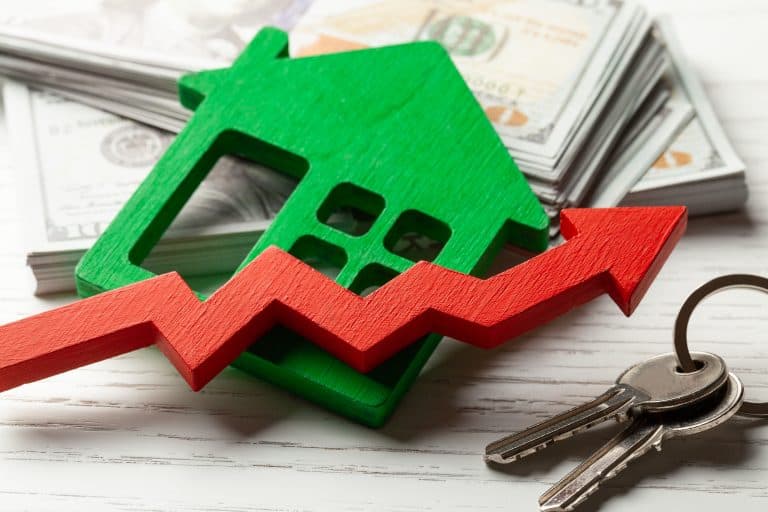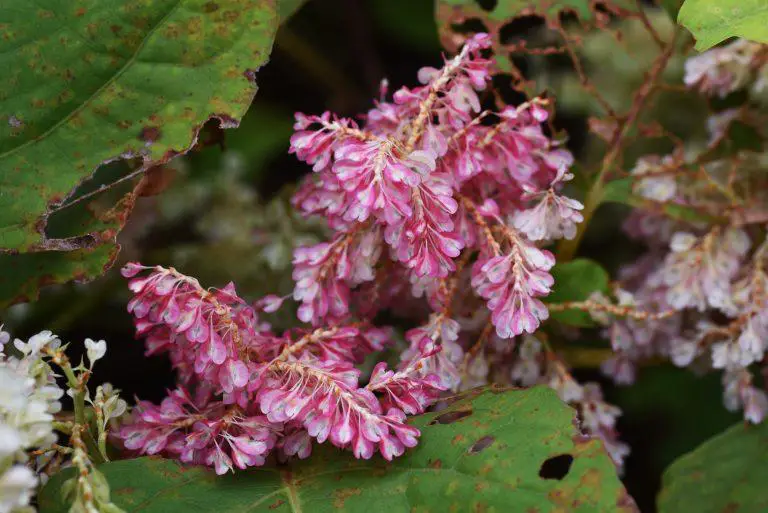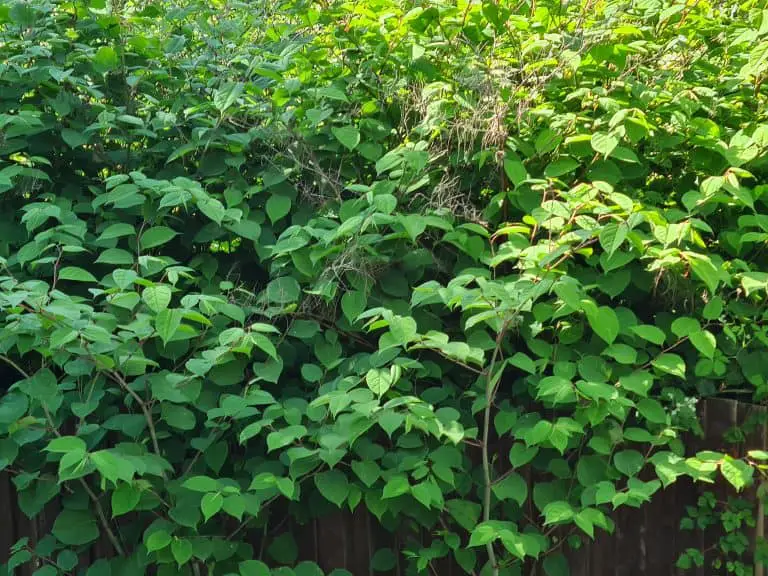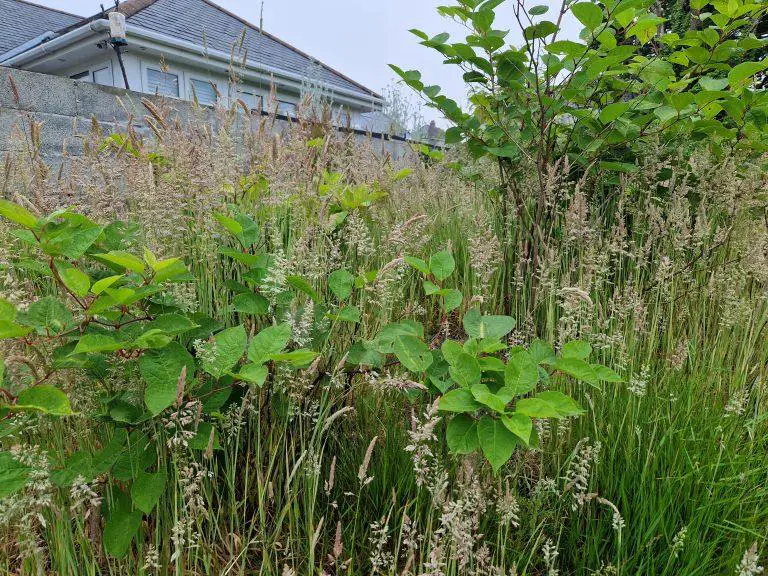Japanese knotweed characteristics are many, as is its being one of the most invasive plants in the UK. Here we try and explain in a bit more detail some of those characteristics. Whilst many plants strike a resemblance with this weed making it harder for it to be identified easily.
This article has everything that you need to know about the invasive Japanese knotweed. Read on….
What is Japanese knotweed?
Japanese knotweed is an aggressive and extremely invasive herbaceous plant originating from Asia. The knotweed is easily mistaken for other similar invasive plants. The plant has grown widely in the British countrywide since its arrival in the late 19th century.
The Japanese knotweed is UK’s most destructive and invasive plant. It can ravage through tarmacked lawns and properties. It can creep under structures and get to the floorboards due to its extensive root system. Its removal is challenging and quite costly, as you will learn in this article.
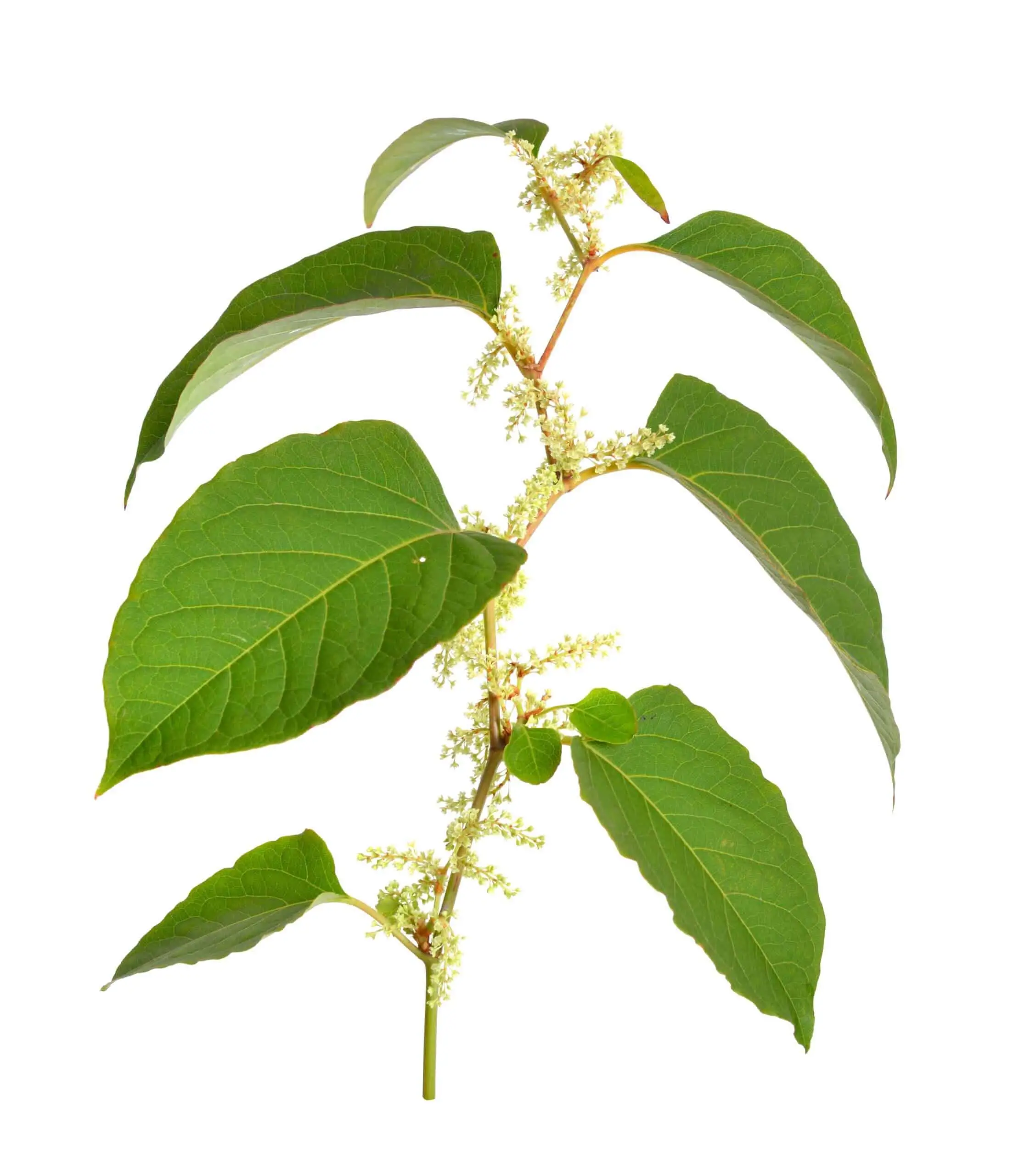
How to identify the Japanese knotweed characteristics
Timely identification of this weed is crucial to prevent damage to structures in the infested areas. Here are the characteristics of the plant:
Unique leaves
It is easy to recognize the weed by its heart-shaped leaves. They are pointed at the tip and form a zigzag pattern as they emerge from the stem. They are dark green, growing up to 200mm in length.
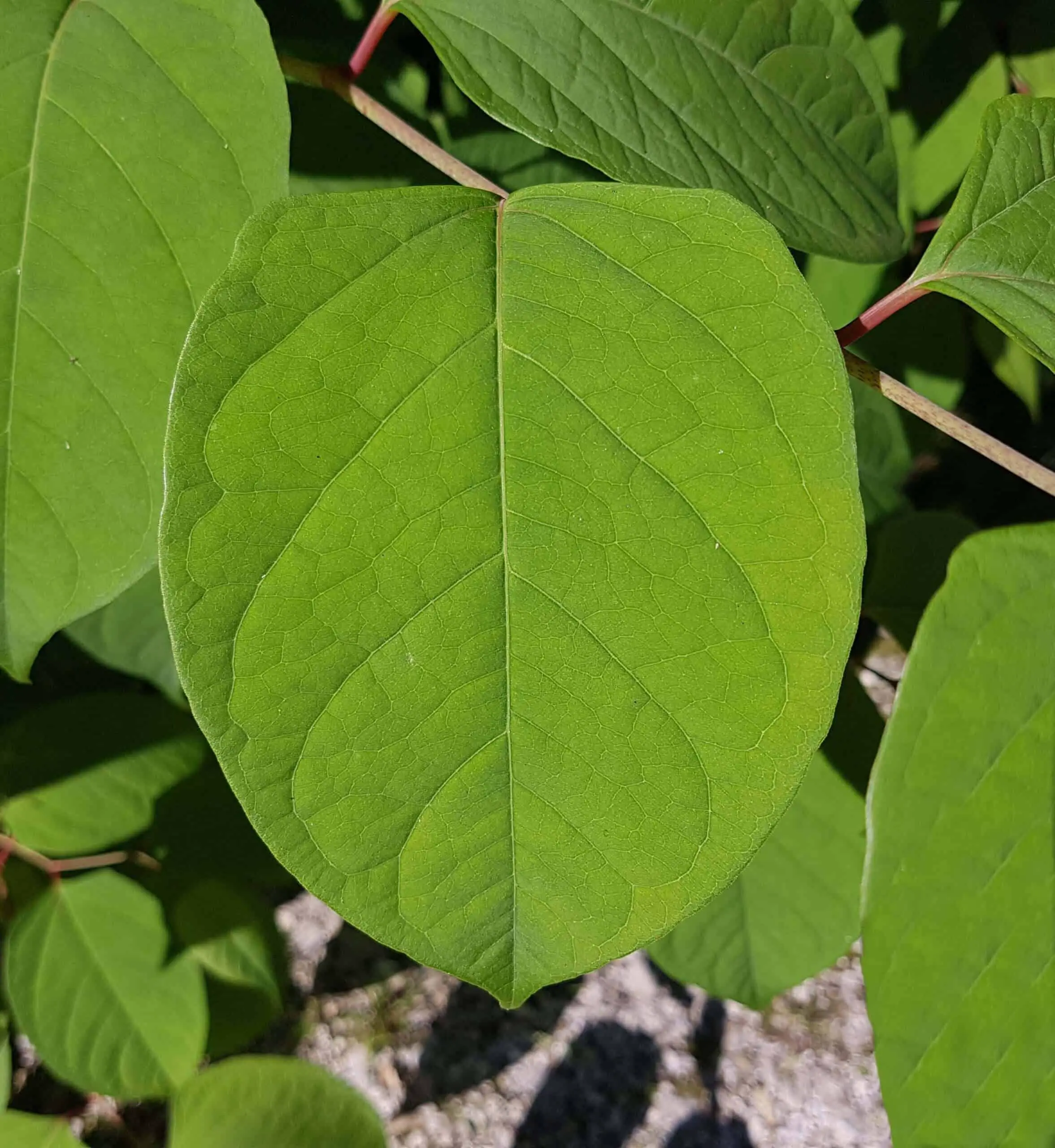
Tall stems
This plant can grow fast within a short period. It grows up to3 meters. The stems feature nodes and purple speckles, they are hollow and not woody like those of Bamboo. The stems will quickly change into dark brown and brittle during winter.
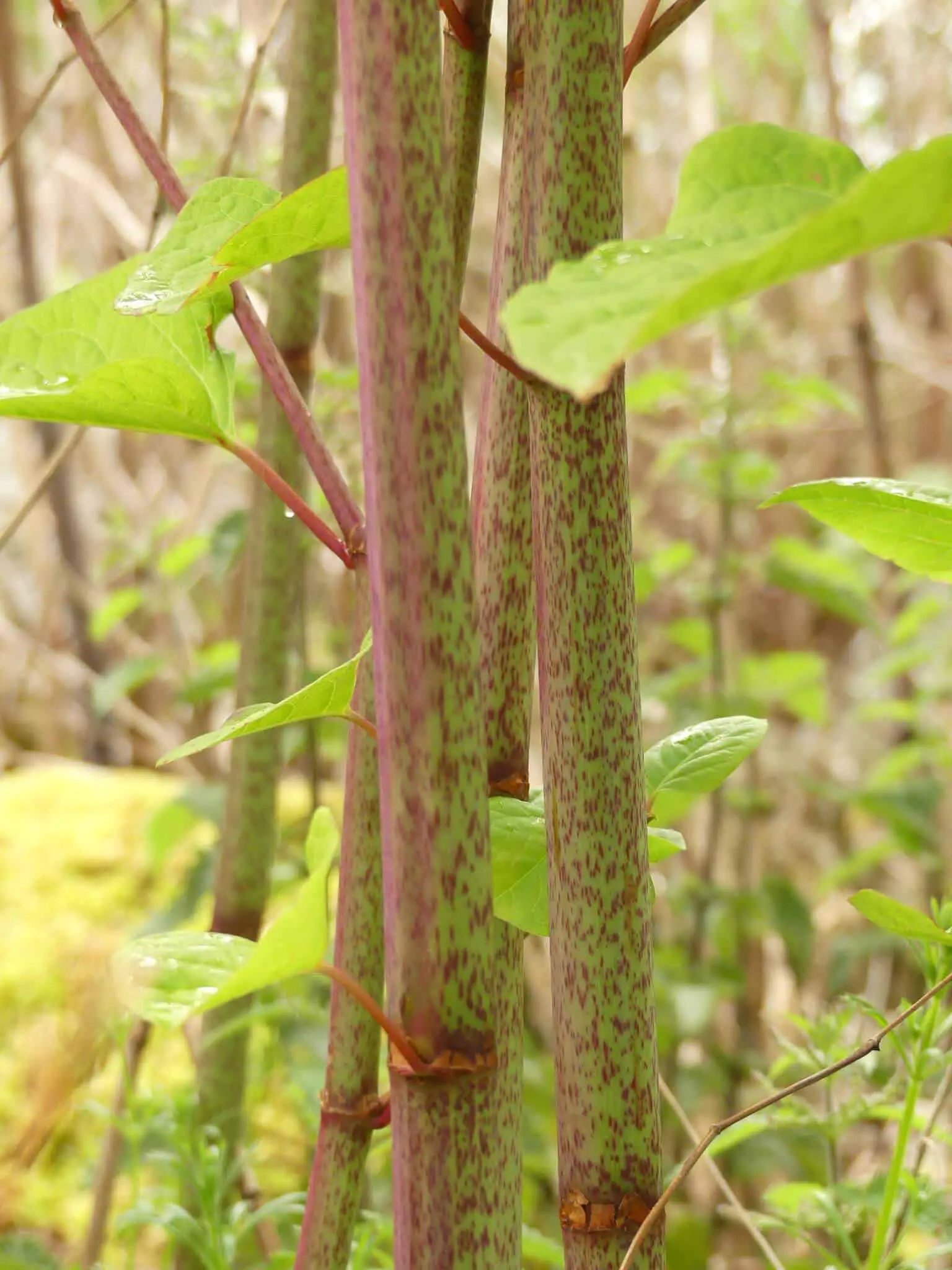
Creamy-white flowers
The Japanese knotweed has creamy-white flowers that appear towards the last weeks of summer. They occur in clusters that are about 0.5 cm wide and 10 cm long when mature. The leaves, together with the flourishing flowers, create dense foliage.
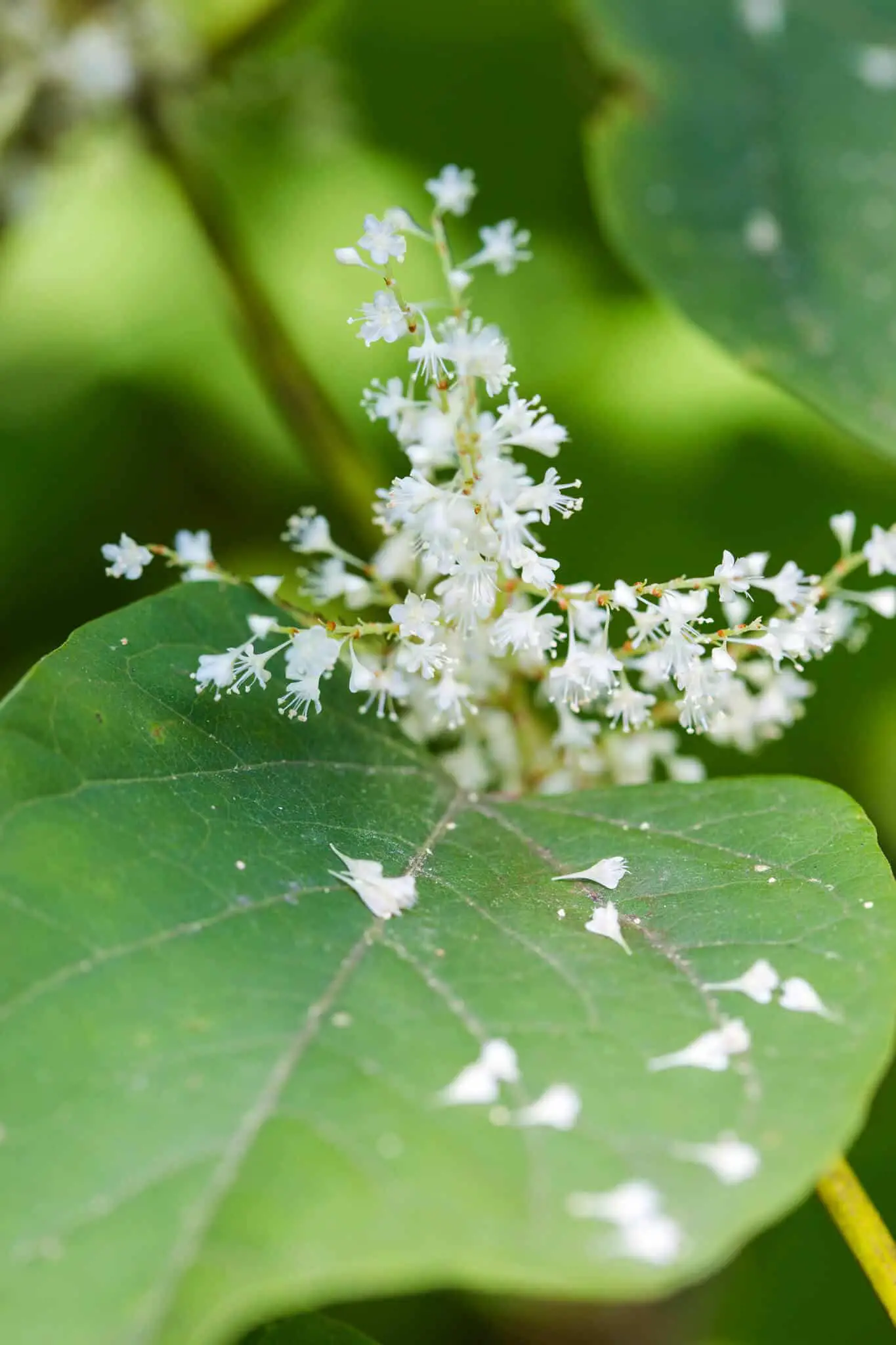
Extensive root system
The rhizomes are the underground stems of the weed. This root-like stem is dark brown on the outside and orange on the inside when snapped.
The rhizomes have the potential to grow up to 2 meters deep and 7 meters horizontally.
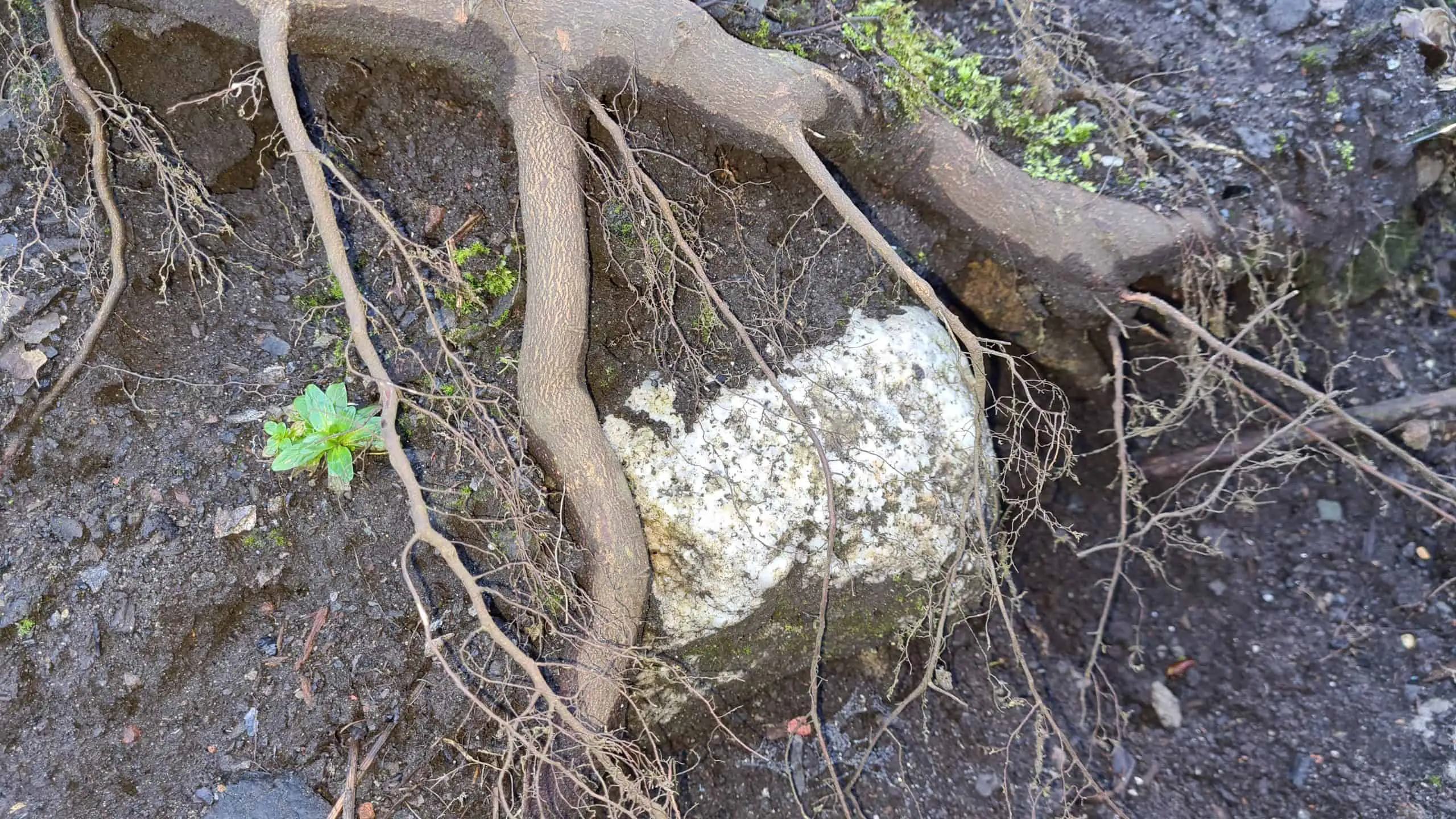
Habitant
This weed can grow in any climatic condition. However, it grows faster under the sun. It can be found in riverbanks, roadsides, streams, wetlands, and wet edges around properties.
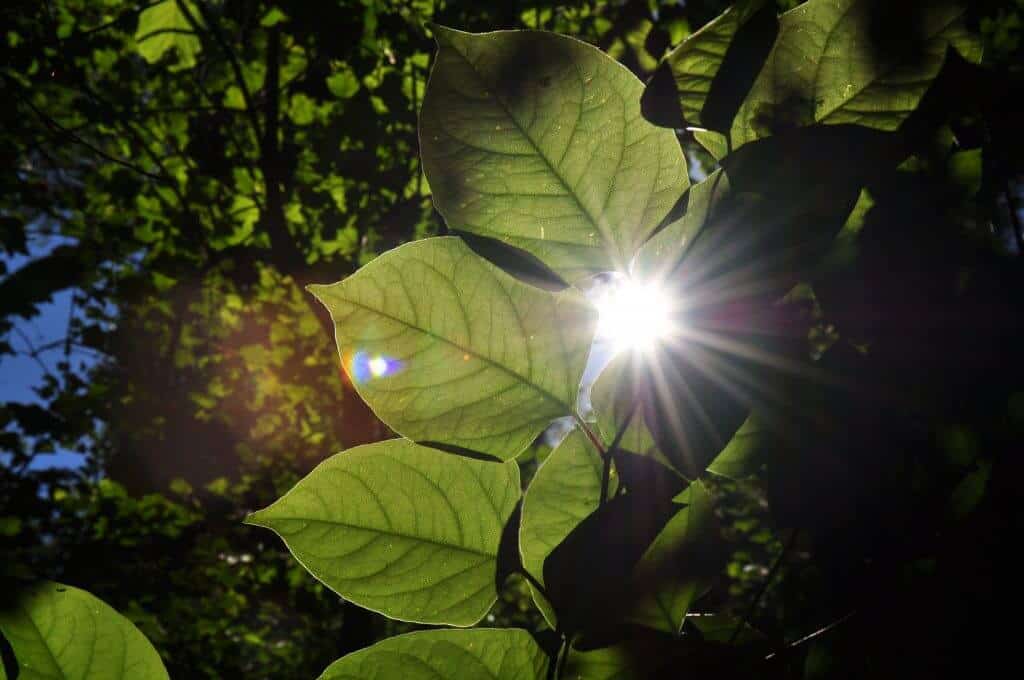
Identifying the Japanese knotweed characteristics throughout the year
We have already discussed how the plant appears. Let’s learn how the plant evolves all year round:
Fast growth in spring
The fastest growth of this weed can be seen during spring. Its red or purple shoots emerge and are similar to asparagus. The plant grows up to 3 meters towards the end of spring.
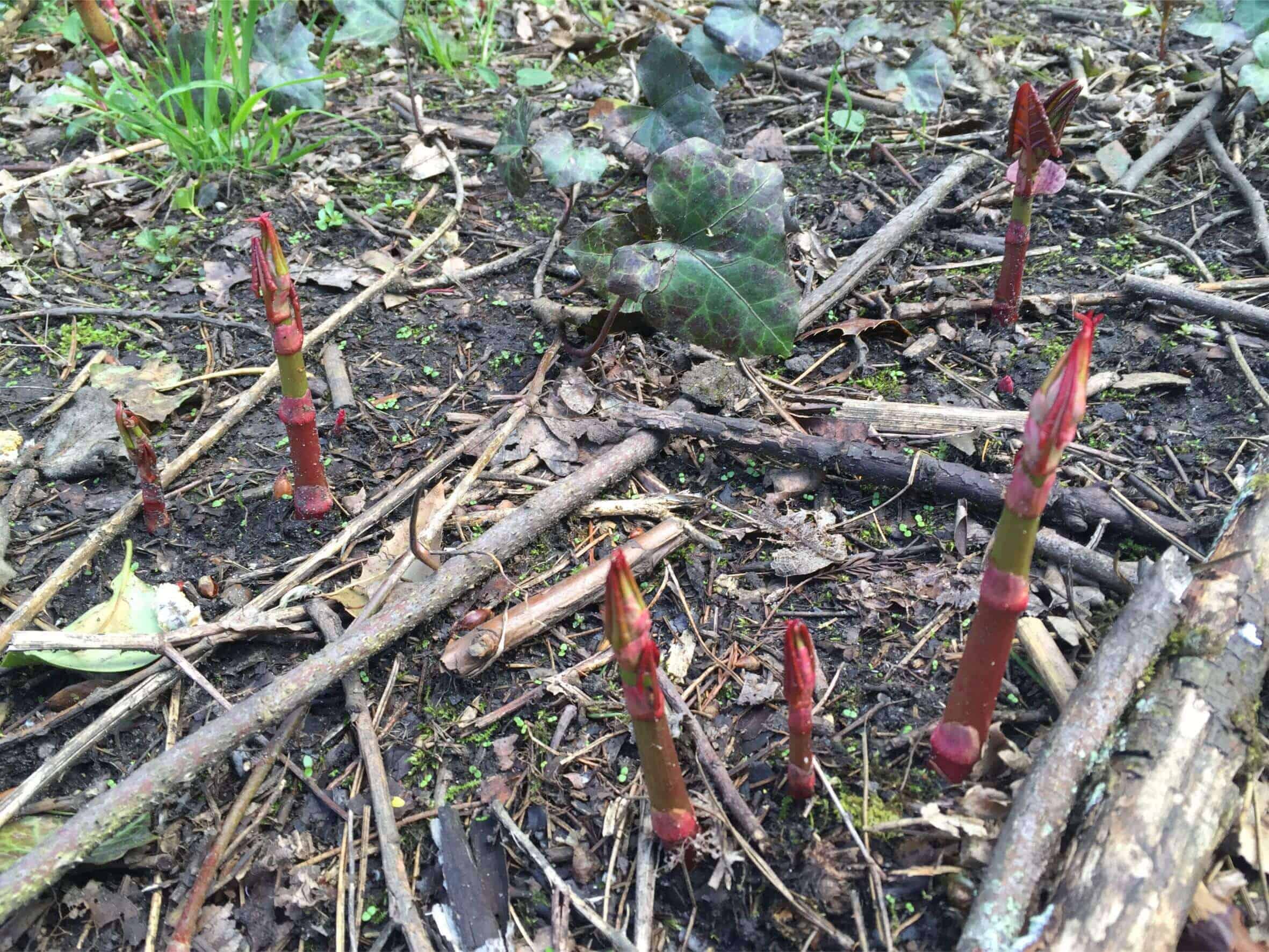
Major changes in summer
The leaves are green and shovel-shaped during summer. You will notice small clusters of flowers towards the end of summer in early autumn. The stems are hollow and brown in appearance.
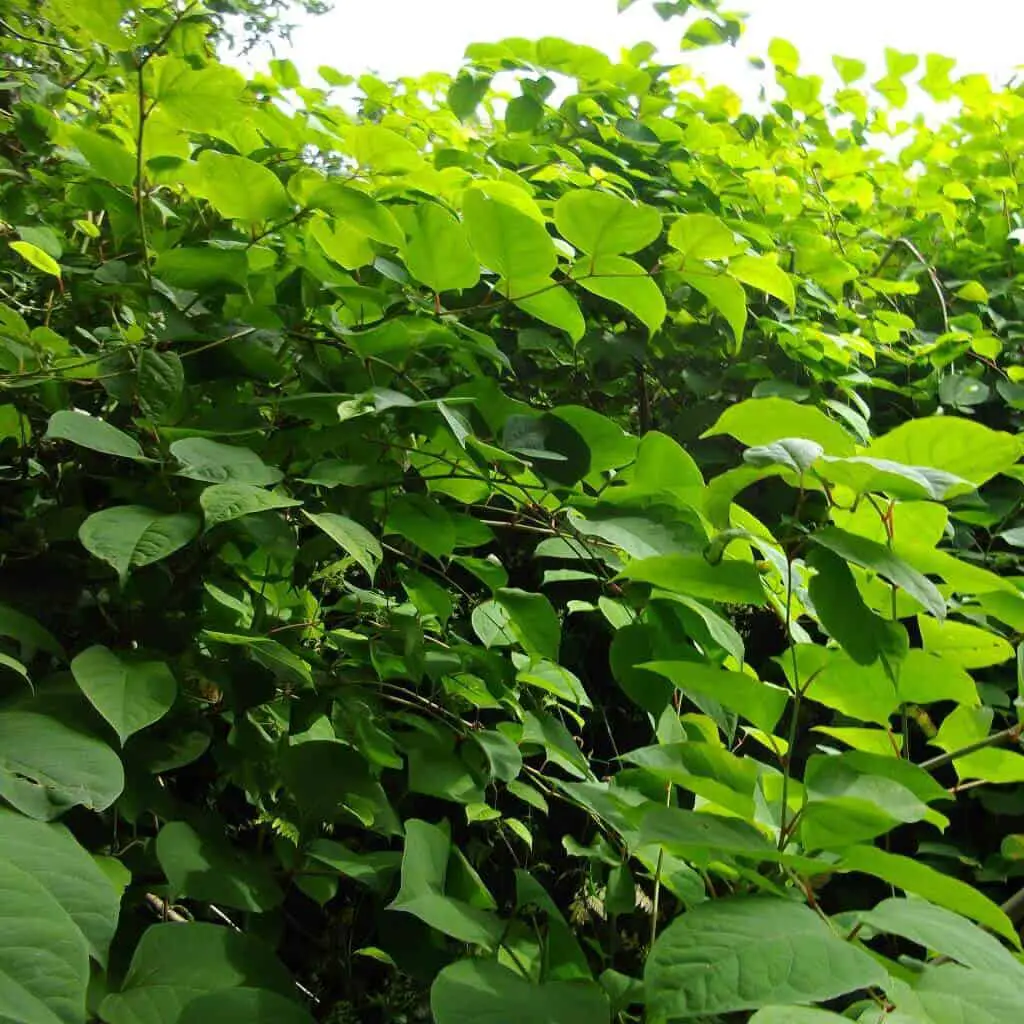
Stems changes in autumn
The leaves become browner and dense in early autumn. The stems will still be hollow but dark brown in appearance.
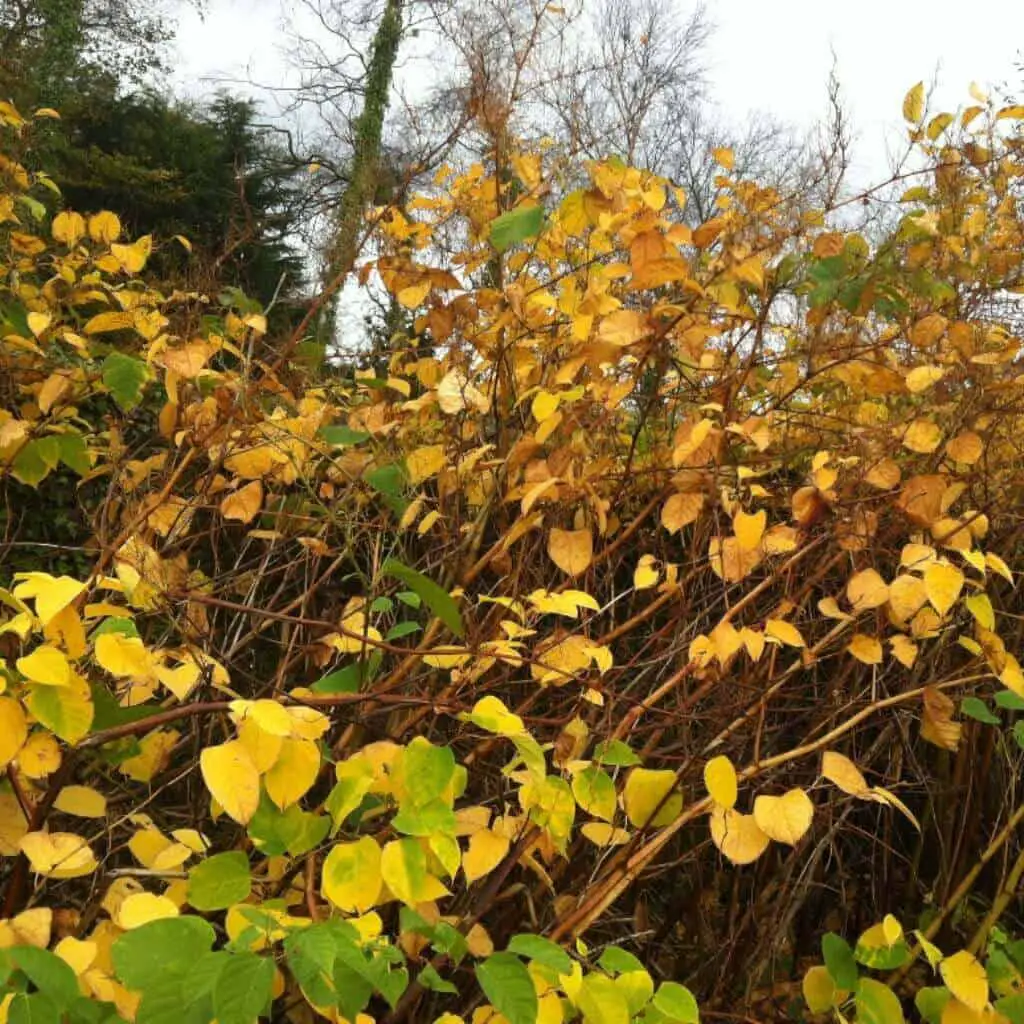
Stem and leaves change in winter
The knotweed canes die off and become dormant at the beginning of winter. The leaves change from yellow to brown and fall off. The plant falls and decomposes towards the end of winter.
How does it spread?
The knotweed spreads by vegetative means. The root system can grow from existing rhizomes or crowns. Any tiny root or stem fragments being transported from contaminated soil will grow in a new area. You must dispose of the contaminated soil carefully to avoid regrowth.
Eliminating knotweed yourself
You can dig out the knotweed yourself, but it is risky in several ways. The plant’s extensive root system is difficult to get rid of and there is always a possibility of regrowth. Here are some tips for getting rid of the weed:
Try to get rid of the problem: You should dig up the root as much as possible to destroy regrowth. It will take months to years to completely get rid of the plant by digging up.
Do not try to get rid of the weed if you plan on selling your property: The best option is to hire a weed expert to initiate treatments on your property. Mortgage lenders will need professional reassurance when you have Japanese knotweed.
Stop the weed spread to the neighbouring land: Japanese knotweed is a problem for everyone. It spreads quickly and may lead to disputes with your neighbour if it spreads to your neighbour’s property.
Have a d discussion with your neighbour about the Japanese infestation on your property and the treatment plans in place. You may need a barrier to prevent encroachment into their property as you try to get rid of this weed.
Avoid spreading contaminated soil: The weed grows from the small fragments in contaminated soil. To avoid contamination, you should dispose of the waste at licensed landfill sites. You should also avoid handling the weed waster with your usual household waste.
It is possible to slow down the growth of the knotweed: You may use chemical methods such as weed suppressant fabrics. The landscaping fabrics are laid over the cleared soil, and this will quickly stop the regrowth of old weeds and prevent new ones from emerging.
Try Glyphosate herbicides: Glyphosate-based herbicides are the most effective chemicals for treating Japanese knotweed. Before its use, you need to cut the old stems to have optimum access to the plant. Spray the weed during summer during flowering and autumn before it dies.
Treat repeatedly until you get rid of the weed completely. It will take about six seasons or at least two years to eradicate the knotweed using this herbicide.
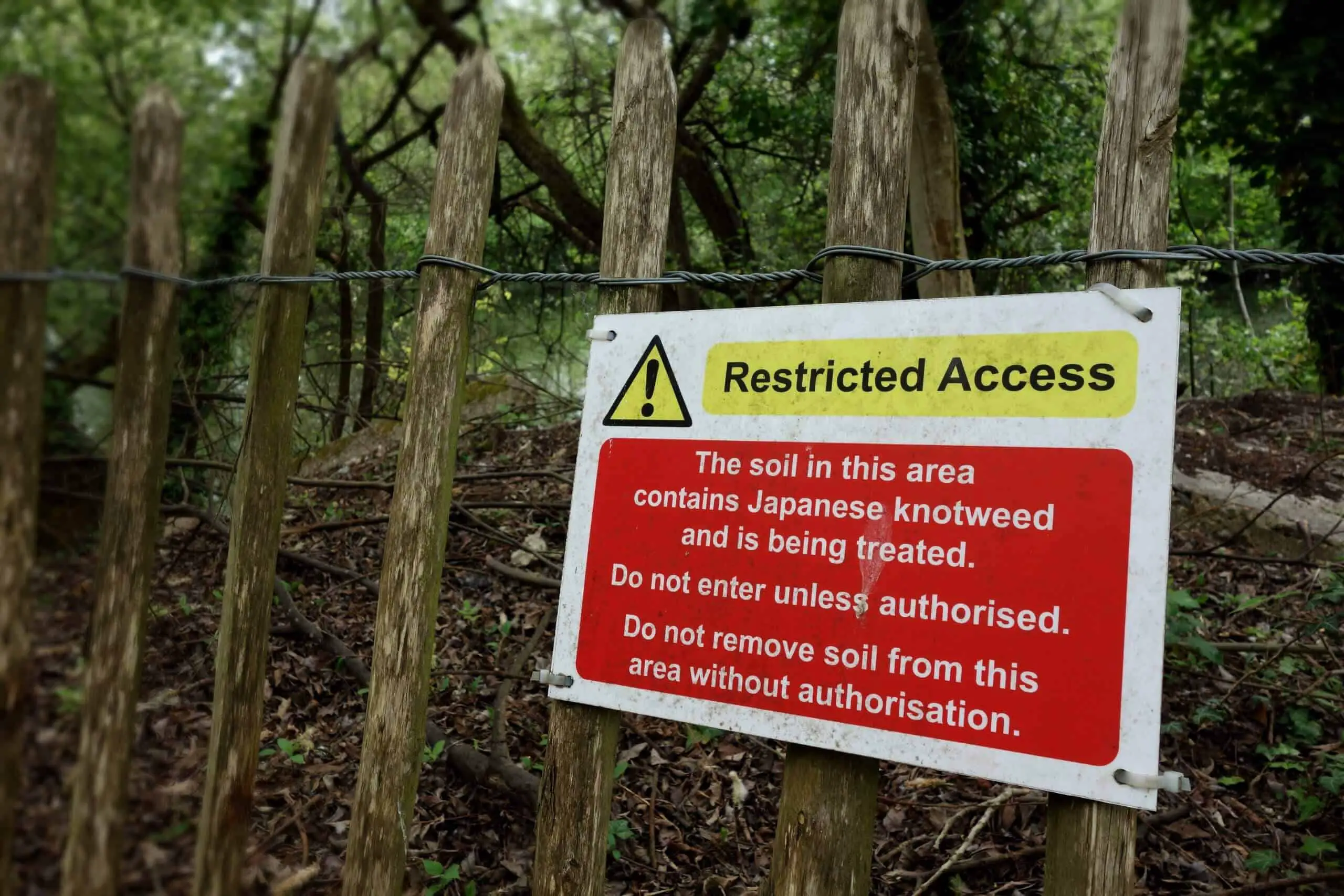
Seeking professional advice
If the knotweed is too stubborn to get rid of, it is advised to seek help from an expert. Seeking professional advice is pricey, but then it can be the only option you have.
Specialists have access to better weed killers and skills on how to speed up the eradication process.


